(This is Part III of a three-part article prepared by our Russian friend Comrade Aleks. Part I is here, Part II is here.)
This third part of an article that has mainly told the story of World War II’s Eastern Front was supposed to appear earlier, but for some reasons I couldn’t rush. Its structure isn’t so straight, but the main subjects of this part aren’t battles, but the dirtier side of War, War Crimes.
It’s impossible to believe that such things were done by human kind in the period from 1941 ’til 1945, yet these crimes in different forms continue to the present days. You’ll not find here my point of view – only facts from the internet which you can easily check, and mostly extreme and brutal musical points of view on the events of World War II.
Here we have tracks from KYPCK, 1349, Slayer, and Jucifer (again), and you’ll also find exclusive comments by such bands as Winterborn (with fierce and sudden audio help from Impaled Nazarene), The Committee, Cirith Gorgor, and Endstille — along with their music.
I have no quote of Erich Maria Remarque for this time. Just never forget.
Continuation War
The Continuation War (25 June 1941 – 19 September 1944) refers to the hostilities between Finland and the Soviet Union during the Second World War, from 1941 to 1944. It’s not something we can be proud of, because it’s still a riddle for me why the USSR started the Winter War (1939-1940) with Finland and how it turned into the Continuation War a year later.
Acts of war between the Soviet Union and Finland started on 22 June 1941, the day Germany launched its invasion of the Soviet Union, with covert Finnish operations. Open warfare began with a Soviet air offensive on 25 June.
Subsequent Finnish operations undid its post-Winter War concessions to the Soviet Union on the Karelian Isthmus and Ladoga Karelia, and captured East Karelia by September 1941. On the Karelian Isthmus, the Finns halted their offensive 30 km from Leningrad, at the pre-World War II border between the Soviet Union and Finland. Finnish forces did not participate in the siege of Leningrad directly, holding their pre-World War II territory on the Karelian Isthmus for two and a half years instead.
In 1944, Soviet air forces conducted air raids on Helsinki and other major Finnish cities. Eventually, in summer 1944, the Soviet strategic offensive drove the Finns from most of the territories they had gained during the war, but the Finnish Army later brought the offensive to a standstill in July 1944.
A ceasefire ended hostilities on 5 September and was followed by the Moscow Armistice on 19 September. The 1947 Paris peace treaty concluded the war formally. Finland ceded Petsamo Province to the Soviets, leased Porkkala peninsula to them, and paid reparations, while ultimately retaining its independence.
The Finnish heavy metal band Winterborn has two songs about the confrontation between the USSR and Finland. Pasi, on behalf of the band, sent me his comments about it:
“WW II has always been an interesting thing for me overall. I really like to read and watch documentaries about it. And every time I learn more of it, it blows me away how fucked up the world was and how many little things and stories there are that affected things back then. And it really put modern-day problems in perspective for me. And with Finland at war with Russians, it is still a close thing for me and a lot of Finnish people.
“But the idea for song lyrics and topics back then when I wrote those songs “Overture 1939” and “Winter War”, always came from the music that I had written first. So it used to be always the music came first, and then it told me some kind of story when I heard it… you know, you get some vibe from the melodies and stuff… and this particular piece reminded me of war and I wanted to pay tribute to Finnish soldiers who were true heroes fighting outnumbered against the Russian giant.
“The music brings the vibes and different emotions involving the war. On “Overture 1939” it is all about how the Finnish men felt, when the Russians actually attacked us. At first they couldn’t believe it… and on the actual “Winter War”, the heavy part of the song, it is all about fighting for your country and loved ones and going thru hell doing it. My mother’s father was in the war, and also my wife’s grandfather fought there. I think almost all Finnish people have someone they know who fought in these wars. It really touched the whole nation and still does.
“It still does touch the people here, and I think we really appreciate the veterans still alive today. We owe them and all of them who fought for our independence. They paid the ultimate sacrifice for this country.
“Well, what turning points of WW II for my country would I mention? Of course, the fact that we beat the Russians in the Winter War, and after that we managed to stay independent after the Continuance War”.
I didn’t find the Winterborn songs on-line, so you can check a more brutal point of view on this question from Impaled Nazarene.
Impaled Nazarene – Total War (winter war)
Causalities
World War II was the deadliest military conflict in history in absolute terms of total dead. Over 60 million people were killed, which was about 3% of the 1940 world population (est. 2.3 billion). World War II fatality statistics vary, with estimates of total dead ranging from 50 million to more than 80 million. The higher figure of over 80 million includes deaths from war-related disease and famine.
Civilians killed totalled 50 to 55 million, including 19 to 28 million from war-related disease and famine. Total military dead: from 21 to 25 million, including deaths in captivity of about 5 million prisoners of war.
Recent historical scholarship has shed new light on the topic of Second World War casualties. Research in Russia since the collapse of the Soviet Union has caused a revision of estimates of Soviet war dead. According to Russian government figures USSR losses within postwar borders now stand at 26.6 million.
In August 2009 the Polish Institute of National Remembrance (IPN) researchers estimated Poland’s dead at between 5.6 and 5.8 million. The historian Rüdiger Overmans of the German Armed Forces Military History Research Office published a study in 2000 that estimated German military dead and missing at 5.3 million
The Committee – Katherine’s Chant
Igor Mortis of international atmospheric black metal band The Committee tells about their album Power Through Unity, which was released in February 2014 by Folter Records.
“It’s impossible to comment on the “Katherine’s Chant” song without considering the whole album, Power Through Unity. As a concept album, Power Through Unity tells how the Soviet Union and Germany pushed against each other despite the fact that there weren’t any political claims between them. The album shows a situation when both sides understood where the War would lead them; there would not be a conflict between them in ideal circumstances. For example our German fans absolutely understand our point of view and support us.
“The song ‘Katherine’s Chant’ tells about the horror of war, and through the means of the individual feelings of the soldier, is an interpretation of bloodshed and front-line fights. The USSR starts to advance with the support of the Katyusha batteries. This song can be called patriotic, but we do not choose sides and we treat with respect and understanding both the Russian people and the Germans (who were well brainwashed). No one wants war!
“‘The Last Goodbye'” is our favorite song on the album. It’s a song of the soldier (he could be Russian or German) who did not return from the front, and who recalls the family hearth and home. This song also tells how our Anglo-Saxon “partners” pushed the two sides with their foreheads and sent two armies against each other in this suicidal meat grinder.
“Living in Belgium (and traveling through Germany), we got to know the Germans and greatly respect them as people and as a nation. As for me, I remain Russian even after 15 years living abroad. Since all members of The Committee live in small Belgium, we know that there’re a lot of different nationalities and our band isn’t an exception.
“My grandfathers fought in WWII. My grandfather on the maternal side become an orphan because of the War. One of my great-grandparents took part in the Battle for Berlin in 1945. One family from Poland gave him a gold coin as gratitude, and later he gave it to his wife as a wedding present. My great-grandmothers worked 6 days a week in factories in Siberia and threw all their efforts into making products for the front”.
The Committee – The Last Goodbye
Nazi Concentration Camps
Nazi Germany maintained concentration camps throughout the territories it controlled. The first Nazi concentration camps were erected in Germany in March 1933 immediately after Hitler became Chancellor and his Nazi Party was given control over the police through Reich Interior Minister Wilhelm Frick and Prussian Acting Interior Minister Hermann Göring. Used to hold and torture political opponents and union organizers, the camps initially held around 45,000 prisoners.
Heinrich Himmler’s SS took full control of the police and concentration camps throughout Germany in 1934–35. Himmler expanded the role of the camps to holding so-called “racially undesirable elements” of German society, such as Jews, criminals, homosexuals, and Romani. The number of people in camps, which had fallen to 7,500, grew again to 21,000 by the start of World War II and peaked at 715,000 in January 1945.
Many of the prisoners died in the concentration camps through deliberate maltreatment, disease, starvation, and overwork, or were executed as unfit for labor. Prisoners were transported in inhumane conditions by rail freight cars, in which many died before reaching their destination. The prisoners were confined to the boxcars for days or even weeks, with little or no food or water. Many died of dehydration in the intense heat of summer or froze to death in winter. Concentration camps also existed in Germany itself, and while they were not specifically designed for systematic extermination, many of their inmates perished because of harsh conditions or were executed.
Auschwitz concentration camp was a network of German Nazi concentration camps and extermination camps built and operated by the Third Reich in Polish areas annexed by Nazi Germany during World War II. It consisted of Auschwitz I (the original camp), Auschwitz II–Birkenau (a combination concentration/extermination camp), Auschwitz III–Monowitz (a labor camp to staff an IG Farben factory), and 45 satellite camps. According to Timothy D. Snyder, Yale Professor of history, “Auschwitz arose as a concentration camp, the seventh large one in the Reich, after Dachau, Sachsenhausen, Buchenwald, Flossenbürg, Mauthausen and Ravensbrück”
German doctors performed a wide variety of experiments on prisoners at Auschwitz. SS doctors tested the efficacy of X-rays as a sterilization device by administering large doses to female prisoners. Prof. Dr. Carl Clauberg injected chemicals into women’s uteruses in an effort to glue them shut. Bayer, then a subsidiary of IG Farben, bought prisoners to use as research subjects for testing new drugs. Prisoners were also deliberately infected with spotted fever for vaccination research and exposed to toxic substances to study the effects.
The Finnish doom metal band KYPCK, named after the Russian city Kursk, has a song dedicated to children tormented in the Birkenau extermination camp. Its lyrics, as always, were written and sung in Russian, so here’s a translation of the song’s first part.
They opened the wagons,
From pipe goes the fire and smoke…
I’m scared… what is the stink?
And where do we go?
We are in hell.Birkenau children have left here their young hearts.
And neither my sorrow nor my grief can return them to life…
Their eternal moans I still hear in my ears,
And whisper my prayers into the void
KYPCK – Deti Birkenau / Children of Birkenau
Nazis perpetrator — Josef Mengele
The name of Josef Mengele is strongly connected with the Auschwitz concentration camp as he was a German Schutzstaffel (SS) officer and physician in this camp. He was notorious for the selection of victims to be killed in the gas chambers and for performing deadly human experiments on prisoners. After the war, he fled to South America, where he evaded capture for the rest of his life.
Mengele received doctorates in anthropology and medicine from Munich University and began a career as a researcher. He joined the Nazi Party in 1937 and the SS in 1938. Initially assigned as a battalion medical officer at the start of World War II, he transferred to the concentration camp service in early 1943 and was assigned to Auschwitz. There he saw the opportunity to conduct genetic research on human subjects. His subsequent experiments, focusing primarily on twins, had no regard for the health or safety of the victims.
Mengele’s research subjects were better fed and housed than other prisoners and temporarily safe from the gas chambers. He established a kindergarten for children that were the subjects of experiments, along with all Romani children under the age of six. The facility provided better food and living conditions than other areas of the camp, and even included a playground. When visiting his child subjects, he introduced himself as “Uncle Mengele” and offered them sweets. But he was also personally responsible for the deaths of an unknown number of victims that he killed via lethal injection, shootings, beatings, and through selections and deadly experiments. Lifton describes Mengele as sadistic, lacking empathy, and extremely antisemitic, believing the Jews should be eliminated entirely as an inferior and dangerous race. Mengele’s son Rolf said his father later showed no remorse for his wartime activities
Assisted by a network of former SS members, Mengele sailed to Argentina in July 1949. He initially lived in and around Buenos Aires, then fled to Paraguay in 1959 and Brazil in 1960 while being sought by West Germany, Israel, and Nazi hunters such as Simon Wiesenthal so that he could be brought to trial. In spite of extradition requests by the West German government and clandestine operations by Mossad (the Israeli intelligence agency), Mengele eluded capture. He drowned while swimming off the Brazilian coast in 1979 and was buried under a false name. His remains were disinterred and positively identified by forensic examination in 1985.
The Norwegian black metal band 1349 has a song “Mengele’s” on their album Massive Cauldron of Chaos (2014). Its main idea is formed with brief and simple sentences:
Paralyzed by godless science
Inquisitorial clinical obsessions
Stripped of all sense of self
To carve a new world from rottingThe quintessence in grotesque motion
Repression of the weaker flesh
1349 – Mengele’s
Unit 731
Most of Slayer’s fans know that one of most famous songs “Angel of Death” tells about Josef Mengele too, but we’ll take Slayer here to remind you about a most disgusting colleague of Mengele – about the Japanese medical officer Shirō Ishii who run Unit 731.
Unit 731 was a covert biological and chemical warfare research and development unit of the Imperial Japanese Army that undertook lethal human experimentation during the Second Sino-Japanese War (1937–1945) of World War II. It was responsible for some of the most notorious war crimes carried out by Japan. Unit 731 was based at the Pingfang district of Harbin, the largest city in the Japanese puppet state of Manchukuo (now Northeast China).
Originally set up under the Kempeitai military police of the Empire of Japan, Unit 731 was taken over and commanded until the end of the war by General Shiro Ishii, an officer in the Kwantung Army. The facility itself was built between 1934 and 1939 and officially adopted the name “Unit 731” in 1941.
Between 3,000 and 250,000 men, women, and children – from which around 600 every year were provided by the Kempeitai—died during the human experimentation conducted by Unit 731 at the camp based in Pingfang alone, which does not include victims from other medical experimentation sites, such as Unit 100. Almost 70% of the victims who died in the Pingfang camp were Chinese, including both civilian and military. Close to 30% of the victims were Russian.
Prisoners were subjected to vivisection without anesthesia. Vivisections were performed on prisoners after infecting them with various diseases. Researchers performed invasive surgery on prisoners, removing organs to study the effects of disease on the human body. These were conducted while the patients were alive because it was feared that the decomposition process would affect the results. The infected and vivisected prisoners included men, women, children, and infants, including pregnant women and their infants impregnated by Japanese surgeons.
Prisoners had limbs amputated in order to study blood loss. Those limbs that were removed were sometimes re-attached to the opposite sides of the body. Some prisoners’ limbs were frozen and amputated, while others had limbs frozen, then thawed to study the effects of the resultant untreated gangrene and rotting.
Some Japanese justify their experiments with “a discovery of a new treatment methodology for frostbite,” made possible by the human experimentation conducted in Unit 731. Japan intended to prepare to battle the looming threat of the Soviet Union, which “meant that the Japanese military had to be ready to treat large numbers of its soldiers for frostbite”. So physiologist Yoshimura Hisato conducted experiments by taking captives outside, dipping various appendages into water, and allowing the limb to freeze. Once frozen, which testimony from a Japanese officer said “was determined after the ‘frozen arms, when struck with a short stick, emitted a sound resembling that which a board gives when it is struck'”, ice was chipped away and the area doused in water.
In order to respond to the growing threat of syphilis among Japanese troops, “among whom the prevalence of syphilis was high due to the systematic rape of women and the widespread use of sex slaves,” women at Unit 731 were either raped or infected with a serum containing virulent strains of syphilis. In the case of the body’s internal reaction to infection, patients were vivisected or killed with autopsies being conducted immediately afterward. Forced pregnancy was also used to determine the effects of vertical transmission of the disease.
The unit received generous support from the Japanese government up to the end of the war in 1945. The Nazis and Japanese conspired in their experimental efforts.
Instead of being tried for war crimes, the researchers involved in Unit 731 were given immunity by the U.S. in exchange for their data on human experimentation. Some were arrested by Soviet forces and tried at the Khabarovsk War Crime Trials in 1949. Americans did not try the researchers so that the information and experience gained in bio-weapons could be co-opted into the U.S. biological warfare program. Shirō Ishii and his team managed to negotiate and receive immunity in 1946 from war-crimes prosecution before the Tokyo tribunal in exchange for their full disclosure of germ warfare data based on human experimentation. Ishii died of throat cancer at the age of 67, having, according to his daughter, converted to Catholicism on his death bed.
Slayer – Unit 731
Battle in Berlin
World War II could be stopped from some point only in one place, and that was Berlin.
While the Battle of Berlin encompassed the attack by three Soviet Army Groups to capture not only Berlin but the territory of Germany east of the River Elbe still under German control, the battle in Berlin details the fighting and German capitulation that took place within the city.
The outcome of the battle to capture the capital of the Third Reich was decided during the initial phases of the Battle of Berlin that took place outside the city. As the Soviets invested Berlin and the German forces placed to stop them were destroyed or forced back, the city’s fate was sealed. Nevertheless, there was much heavy fighting within the city as the Red Army fought its way, street by street, into the centre.
On 23 April 1945, the first Soviet ground forces started to penetrate the outer suburbs of Berlin. By 27 April, Berlin was completely cut off from the outside world. The battle in the city continued until 2 May 1945. On that date, the commander of the Berlin Defence Area, General Helmuth Weidling, surrendered to the commander of the Soviet 8th Guards Army, Lieutenant-General Vasily Chuikov.
Soviet forces sustained 81,116 dead for the entire operation, which included the battles of Seelow Heights and the Halbe; Another 280,251 were reported wounded or sick during the operational period. The operation also cost the Soviets about 2,000 armoured vehicles, though the number of irrevocable losses (write-offs) is not known. Initial Soviet estimates based on kill claims placed German losses at 458,080 killed and 479,298 captured, but German research puts the number of dead at approximately 92,000 – 100,000. The number of civilian casualties is unknown, but 125,000 are estimated to have perished during the entire operation.
It’s also said that during, and in the days immediately following the assault, in many areas of the city, vengeful Soviet troops (often rear echelon units) engaged in mass rape, pillage and murder.
Cirith Gorgor Der Untergang… (teaser)
Black metal band Cirith Gorgor (Netherlands) has an album Der Untergang… / Победа!!! which tells the story of WWII from the Stalingrad Battle ’til the Battle In Berlin, and that’s why I asked Heer Marchosias (the band’s guitarist) to help me and answer a few questions.
“On our fourth full-length album from 2007, the self-titled Cirith Gorgor, there was already a song about the battle of Stalingrad called “Der Untergang… / Победа!!!”. This was more or less an experiment to see whether we could integrate slower atmospheric parts into our (otherwise) extreme and brutal black metal. In our opinion it worked out very well and the idea was soon extended into a concept album, which would initially appear on handnumbered vinyl exclusively (to make it an even more special release — eventually it was also released on CD by Ketzer Records due to the increasing demand).
“To me this development was very satisfactory, since I had the idea of writing a concept album about the fighting on the Eastern Front for many years. So I started working on the album immediately and created all the songs and lyrics, as well as the artwork myself. It was a very intense yet fulfilling time for me personally.
“At home I have a small library relating to the Second World War, and to me, the subject has played an important role during my life, from early childhood on. To be able to release such a concept album to commemorate one of the largest, if not the largest, theater of war in the recorded history of mankind and honor the many fallen soldiers and civilians from both contending sides was a major achievement in my life. To conclude this task, I had the statue “The Motherland Calls” tattooed on my body.
“In general, however, the Second World War doesn’t play a large part in the music and lyrics of CIRITH GORGOR. Our topics deal mainly with Luciferian worship and the spreading of darkness and death. But the specific brutality of fighting on the WWII Eastern Front (fed by two extreme and opposing ideologies) has been quite inspiring to write brutal black metal (representing the fighting itself) and the accompanying atmospheric parts (representing human suffering and emotions).
“In fact, Der Untergang… / Победа!!! is a concept album spanning the time period from defeat of the German forces at Stalingrad to the final collapse of Nazi Germany in the battle of Berlin. It is divided into several parts, three main metal songs framed by atmospheric intros and outros, but in principle it should be experienced as one long vision of time past.
“Musically, I’m still very satisfied with the entire album but I nevertheless believe that “Der Untergang III” (covering the lyrical chapters “A Tidal Wave from the East”, “Enemy at the Gates”, and “The Battle of Berlin”; the lyrics are only included on the vinyl version) presents the combination of brutality and gloomy atmosphere especially well. That is one of the reasons that we still perform this song during live rituals.
“How do I see role of Soviet ideology in this War?… One could go in any direction with such a general question. I would like to pick out a single issue, which characterizes the political and ideological nature of the fighting on the Eastern Front. Namely, the fact that Soviet army units had political commissars attached to them, whose occupation it was to instill a truly communist attitude into the soldiers. The Russian soldiers often had the choice of being shot by their own commissars (for supposedly not being brave enough to fight for the Motherland) or being butchered by German machine gun fire.
“The German Wehrmacht never really had anything comparable (so some units were not susceptible to Nazi ideology), but independent Waffen-SS units comprising elite political soldiers were omnipresent and feared. By opposing two extreme ideologies on the battlefield, the fighting was of a very grim and determined nature and terrible war crimes were committed by both sides. Hitler, as always realizing the importance of propaganda, ordered all Soviet commissars shot on capture.
“On a global scale you could mention several major turning points in the history of the Second World War, both militarily as well as politically. But since Der Untergang… / Победа!!! describes the Nazi-Soviet confrontation, the most obvious turning point is of course the battle of Stalingrad (mainly dealt with in “Der Untergang I”), which needs no further introduction. I still cannot believe the degree of suffering the soldiers must have endured, especially on the German side as the Russians slowly tightened the noose.
“The grandfather of the wife of our singer Satanael actually fought in Stalingrad and was one of the few to survive. In later life he was never really able to talk about his time on the Russian front. The well-known novel Stalingrad by Theodor Plievier captures the despondent atmosphere particularly well. Plievier was a German author who had emigrated to Russia (as a social critic of the German government, although his novel was also censored in Russia). His detailed rendering of the German troops’ despair trying to reach and cross the bridge at Kalach-na-Donu (where the Soviet pincer movements met, hence closing the trap) during operation Uranus still sends shivers down my spine.
“The lyrics of this album are extended (they were too long to be printed in the CD booklet) and represent an historically accurate account of the battles on the Eastern Front as well as the political events framing them. For the artwork I selected some of the most telling and moving images that I could find and they look especially impressive on the large vinyl format.
“As mentioned before, the music and lyrics often go hand in hand, meaning that fast brutal parts describe ferocious fighting and slower atmospheric parts (using for instance acoustic guitars and choir vocals) accompany a lyrical content of deprivation and human misery. Furthermore we included various authentic samples, both from German and Russian propaganda, and these are all positioned in such a way as to fit in closely with the lyrics.
“My paternal grandfather fought in the Dutch army and was stationed at the Grebbeberg, where one of the major battles on Dutch soil took place. His brother was part of a small contingent of supporting troops that supplied English and French forces in Belgium. At the end of the war my maternal grandfather was deported to Germany and forced to work there for the German economy. All have survived the war”.
Cirith Gorgor Der Untergang
Atomic bombings of Hiroshima and Nagasaki
The last point of World War II were the atomic bombings of Hiroshima and Nagasaki. They ended WWII and started the long-running Cold War instead of that.
In the final year of the war, the Allies prepared for what was anticipated to be a very costly invasion of the Japanese mainland. This was preceded by a U.S. firebombing campaign that obliterated many Japanese cities. The war in Europe had concluded when Nazi Germany signed its instrument of surrender on May 8, 1945. The Japanese, facing the same fate, refused to accept the Allies’ demands for unconditional surrender and the Pacific War continued. Together with the United Kingdom and China, the United States called for the unconditional surrender of the Japanese armed forces in the Potsdam Declaration on July 26, 1945—the alternative being “prompt and utter destruction”. The Japanese response to this ultimatum was to ignore it.
On August 6 the U.S. dropped a uranium gun-type atomic bomb (Little Boy) on Hiroshima. American President Harry S. Truman called for Japan’s surrender 16 hours later, warning them to “expect a rain of ruin from the air, the like of which has never been seen on this earth.” Three days later, on August 9, the U.S. dropped a plutonium implosion-type bomb (Fat Man) on the city of Nagasaki. Within the first two to four months of the bombings, the acute effects of the atomic bombings killed 90,000–146,000 people in Hiroshima and 39,000–80,000 in Nagasaki; roughly half of the deaths in each city occurred on the first day. During the following months, large numbers died from the effect of burns, radiation sickness, and other injuries, compounded by illness and malnutrition. In both cities, most of the dead were civilians, although Hiroshima had a sizable military garrison.
On August 15, six days after the bombing of Nagasaki and the Soviet Union’s declaration of war, Japan announced its surrender to the Allies. On September 2, it signed the instrument of surrender, effectively ending World War II. The bombings’ role in Japan’s surrender and their ethical justification are still debated.
Jucifer – Hiroshima
Stalin Note
It’s a matter of dispute whether we could speak here about the Stalin Note, but I guess that we have to keep in mind this document written by a Soviet leader. The Stalin Note, also known as the March Note, was a document delivered to the representatives of the Western allied powers (the United Kingdom, France, and the United States) from the Soviet Occupation in Germany on March 10, 1952. Soviet leader Stalin put forth a proposal for a reunification and neutralization of Germany, with no conditions on economic policies and with guarantees for “the rights of man and basic freedoms, including freedom of speech, press, religious persuasion, political conviction, and assembly” and free activity of democratic parties and organizations.
The German band Endstille has a song about this Note on the Kapitulation 2013 album, so I put some questions about WWII to Zingultus (vocals).
“Kapitulation 2013 is not following a strict concept as an album. We didn’t want to limit ourselves to a certain theme on that album. So it’s not just about WWII. Endstille mainly uses a kind of war theme, but it’s more like war in common.
“When it was thinking about the reuniting of a divided Germany, in 1952 the first diplomatic offer was given to the western occupying powers USA, GB, and France to solve the “German Question”, followed by even more by Josef Stalin. These offers were called “Stalin Notes”. But these offers included for example treatments of peace, which were not bearable for the western allies. So they were a good example of political farce in the beginning of the cold war.
“…War is always a strategic game with ups and downs, its ‘s hard to mention specific points, as it’s always different from every point of view. As for us Germans, it’s mainly about the Third Reich. But for Japanese, the fight of Pearl Harbor would be more important, for example. You can’t get it on one point to over-simplify a World War, I guess…
“We try to show people the ugly face of war. Pure reality. We try to use a brutal and extreme way in speed and sound. Beside that we try to visualize it, by using reports, photos, and blood for example. Blood is the liquor of life and we waste it. We waste life! Just like war does. If you come to one of our concerts, you will get a lot of energy and chaos on stage. You are involved and caught up to be a part of it. It’s not about performing a perfect show… it’s about letting your demons and emotions flow and get the aggression! The exit of brutality!
“And yes, my family members took part in WWII. But it’s not about single fates. We are living in the 2nd generation after it. So we neither feel responsible for what happened, nor guilty. That’s what the song “The Refined Nation” is about, for example.
“As you can imagine, we get confronted with and reminded about our German past and history almost every day by fucking moralizers, national or worldwide. OK, there was something going wrong in the Third Reich for sure, but do I still have to shed a tear for it every day and feel bad to be born in the root of all evil called Germany?! If so… it feels good to be a badass, as I have a good life here. But let me give everybody some advice: look at yourself and clean up your own closet! We’ve been there, we’ve done that! But war continues… somewhere and somehow… by every second and day! Welcome to reality!”
Endstille – Stalin Note

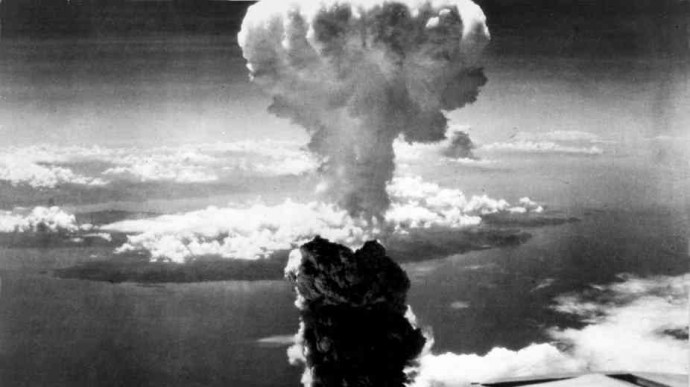
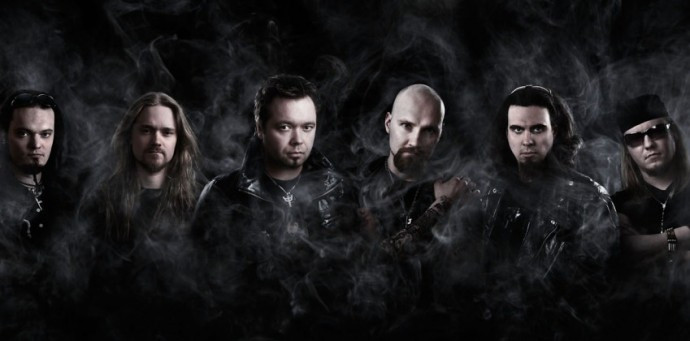
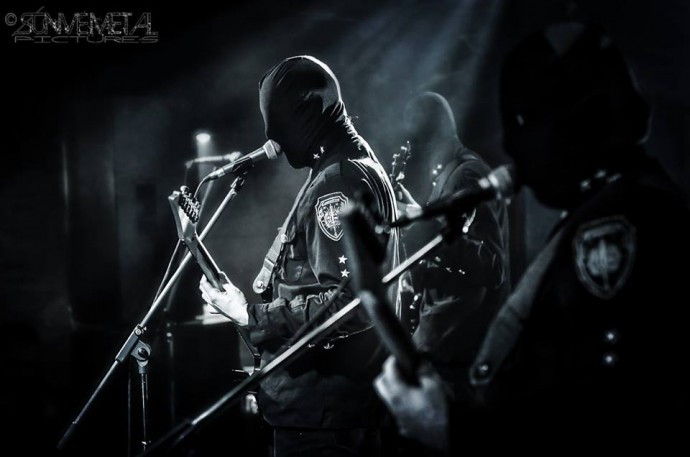
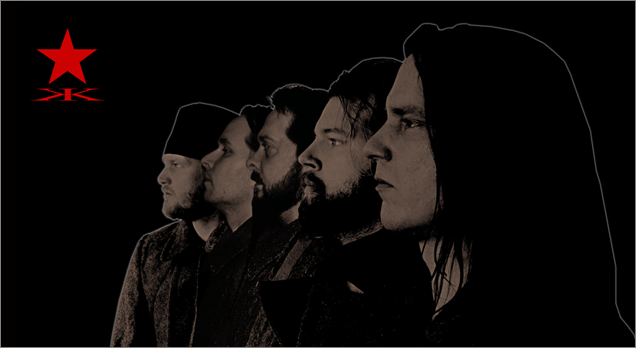

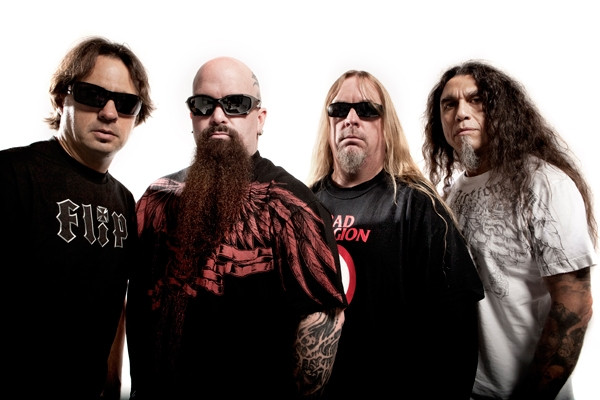
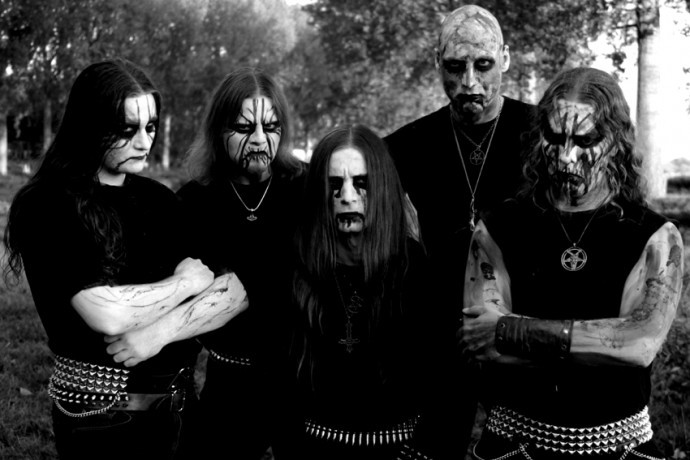
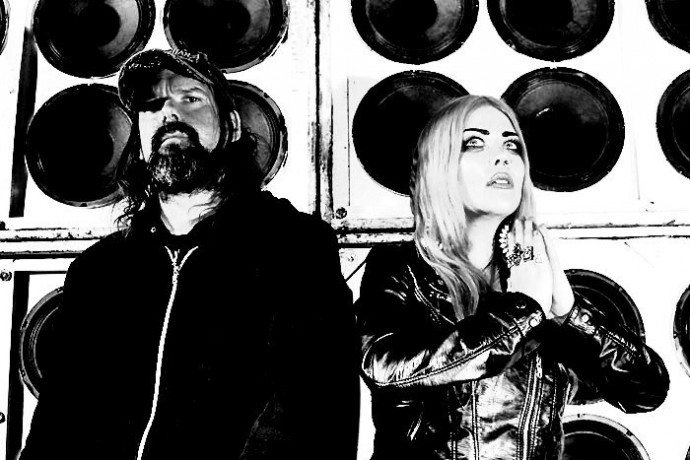
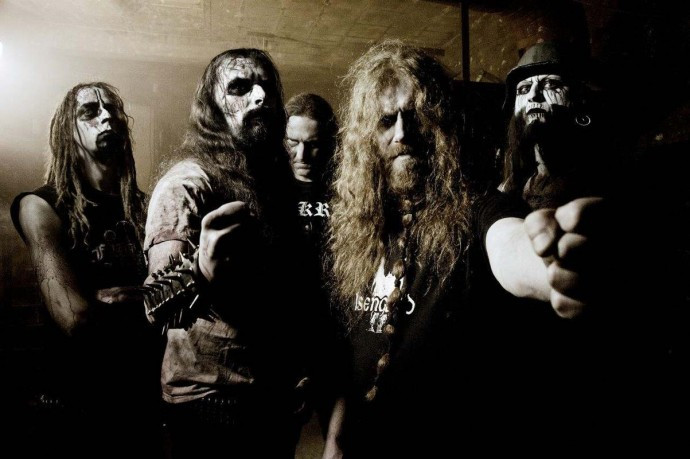
Really enjoyed this entire series. The fact that I’d never heard of Unit 731 makes me a little concerned about how American schools discuss certain elements of the war.
This was an excellent trilogy, thank you for the great read! 🙂
thank you, comrade
Thank you all for feedback – much appreciated.